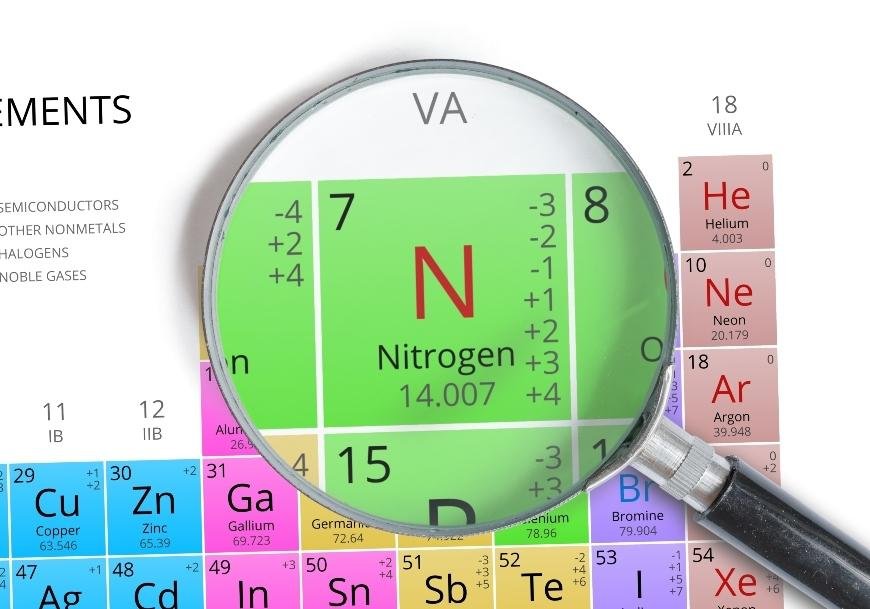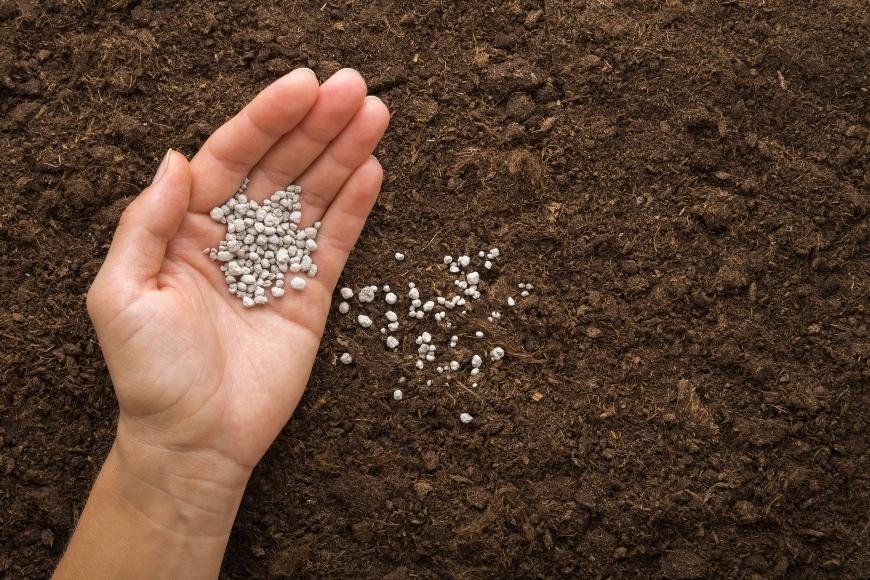Nitrogen for Cannabis Plants
Learn about Nitrogen for Cannabis Plants, detect deficiencies or toxicities, and find solutions for healthy growth in our comprehensive guide.

When it comes to cultivating healthy and potent cannabis plants, nitrogen plays a crucial role in their overall development. Nitrogen is an essential element for plant growth, as it helps produce chlorophyll, amino acids, and other vital components necessary for the cannabis life cycle. In this comprehensive guide on nitrogen for cannabis plants, we will explore its importance and delve into common issues faced by growers.
We'll begin by understanding the significance of nitrogen in your cannabis plants' well-being. Then we'll discuss how to detect potential deficiencies or toxicities that may arise due to imbalances in nitrogen levels. Next, we'll explore how synthetic fertilizers with high nitrogen content can lead to imbalances and consequent problems.
Finally, our focus will shift towards maximizing nutrient uptake through proper pH level management and effective solutions like calcium nitrate supplementation. By following these guidelines provided throughout this blog post on nitrogen for cannabis plants, you can ensure optimal health and yield from your homegrown crop.
Table of Contents:
- Understanding Nitrogen for Cannabis Plants
- Detecting Nitrogen Deficiencies or Toxicities
- Common Issues with Nitrogen Fertilizers
- Maximizing Nutrient Uptake
- FAQs in Relation to Nitrogen for Cannabis Plants
- Conclusion
Understanding Nitrogen for Cannabis Plants
Nitrogen is a necessity for cannabis plants, being essential to their development and expansion. Nitrogen is crucial for the performance of photosynthesis and synthesis of chlorophyll, two fundamental procedures that enable the plant to obtain energy from sunlight. If there’s not enough nitrogen available to the plant, it will experience a deficiency known as “nitrogen starvation” or “low nitrogen levels.”
Treating nitrogen deficiency requires identifying the source of the problem and taking steps to fix it. This could include adding synthetic fertilizers or organic amendments such as composted manure or fish emulsion. Keeping tabs on the pH when using any kind of fertilizer is essential, as too much acidity can inhibit nutrients from being absorbed by the roots. Calcium nitrate is a mobile nutrient that can help treat low-nitrogen problems quickly since it can be taken up directly by older leaves without needing to travel through stems first.
Excess nitrogen can also cause problems for cannabis growers if left unchecked; this is known as “nitrogen toxicity” and results in stunted growth due to overfeeding of nutrients. Too much nitrogen prevents other essential elements like phosphorus and potassium from being properly absorbed by the plant, leading to deficiencies in these areas as well. To avoid this issue, make sure you don't use too many synthetic fertilizers at once – start off small until you get a feel for how your plants react.
Prior to flowering, guarantee the soil has ample organic matter so that plants can obtain all essential nutrients throughout their lifecycle, including nitrogen. This is important as nitrogen helps produce amino acids which are required for proper bud formation and thus yield. Without adequate amounts of amino acids present during this time period, buds may be smaller than they should be or even fail entirely.
Understanding nitrogen for cannabis plants is essential in order to ensure that your crop will grow healthy and strong. To help with this, it's important to be able to detect any potential deficiencies or toxicities of nitrogen in the soil; let's explore how we can do that next.
Detecting Nitrogen Deficiencies or Toxicities
Nitrogen deficiencies or toxicities in cannabis plants can be difficult to detect. The foliage of your cannabis plants may change to a yellowish hue, which could be an indication that nitrogen levels are not balanced. If your plants are showing signs of nitrogen deficiency, it’s important to adjust your nutrient solution accordingly.
To identify if you have a nitrogen deficiency, check for stunted growth, weak stems and leaves that curl downwards. A lack of chlorophyll production can also be an indicator – look for pale foliage with brown patches on the tips and edges of leaves. Additionally, older lower leaves may start yellowing before new growth appears light green or even white-ish in color due to lack of chlorophyll production.
Keeping a close eye on all aspects of nutrient levels is paramount when adjusting fertilizers, for excessive amounts of any single one can cause problems. Discoloration from green to yellow may be an initial sign that nitrogen concentrations are too high or low, and stunted growth with weak stems accompanied by downward curling leaves could further point to a deficiency in this area.
Furthermore, chlorophyll production will suffer if the deficit persists - evidenced by pale foliage with brown patches appearing on the tips and edges of leaves as well as older lower ones turning yellow before new growth takes on light green or even white-ish hues. Finally, symptoms such as dark green foliage coupled with spindly tops along with leaf tip burn (browning) beginning at the outer edges towards the center vein region plus root damage leading to wilting or plant death should lead one to suspect an overload of nitrogen rather than lack thereof.
When it comes time to adjust your nutrient solution according to what type of problem you’re dealing with – either deficiency or toxicity – there are some general rules worth following: if there is a shortage then adding more nitrogen will help; conversely reducing application rates should reduce potential issues caused by overfeeding. Additionally, ensure that the pH level remains between 6-7 as extreme fluctuations can impact absorption rate leading to further complications down the line. Finally, consider using organic amendments such as compost tea which helps improve soil quality while providing essential nutrients naturally rather than relying solely on synthetic fertilizers alone. Beneficial bacteria found within these teas assist in the uptake process while also stimulating microbial activity thus improving overall health and vigor.
Awareness of indications of an insufficient or excessive nitrogen supply is critical for taking corrective action. Moving on, common issues with nitrogen fertilizers can also arise if not used correctly.

Common Issues with Nitrogen Fertilizers
Nitrogen fertilizers are an essential part of any cannabis grower's toolkit. They help provide the necessary nutrients for healthy growth and maximum yields. Nevertheless, certain problems can emerge from utilizing nitrogen fertilizers, like pH discrepancies or nutrient deprivation.
Maintaining a balanced pH level is essential to ensure the optimal uptake of nutrients by plant roots. If the pH level becomes too high or low, this can cause nutrient lockout – where certain elements become unavailable for absorption due to their insolubility at certain pH levels. To avoid this issue, growers should regularly test their soil and water with a reliable testing kit and adjust accordingly if needed.
Nutrient burn is another potential problem caused by excessive use of nitrogen-based fertilizers; symptoms include yellowing leaves or stunted growth in plants which have been overfed with nitrogen-rich fertilizer solutions. The best way to avoid this issue is to stick closely to recommended dosage instructions on product labels and never exceed them without first consulting an experienced grower or professional agronomist who knows how much your particular strain needs in order achieve its full potential yield wise.
Nitrogen is an important component for cannabis growth, but if not applied correctly it can lead to issues. Hence, comprehending how to get the most out of nitrogen fertilizers for your plants is essential for a successful grow. In the next section we will discuss strategies that you can use to ensure optimal nutrient uptake in your cannabis garden.
Maximizing Nutrient Uptake
Maximizing nutrient absorption in cannabis plants necessitates certain tactics that guarantee the most advantageous uptake for your vegetation. Proper watering techniques and soil amendments can make all the difference when it comes to helping your cannabis thrive.
Watering is essential for getting nutrients into the plant's root system. Slowly and evenly spread the water over a prolonged period of time to maximize its penetration into the soil for optimal root access. For optimal hydration, provide a slow and even drenching of the soil over an extended period instead of quick or concentrated sprinkling. You should also aim for consistent moisture levels in order to avoid issues like wilting or stunted growth due to lack of hydration.
Adding organic materials such as compost or manure to the soil will not only enhance drainage and aeration, but also provide essential minerals and trace elements that can help maximize nutrient uptake for cannabis plants. This will not only help improve drainage and aeration, but also provide additional minerals and trace elements that aid in boosting overall health and vigor of your crop. Furthermore, using fertilizers specifically tailored for marijuana provides an extra boost with its macronutrients (NPK) as well as micronutrients like magnesium and calcium which are essential for supporting healthy growth from seedling through harvest time.
Monitoring pH levels is also essential as this can determine the rate of nutrient absorption by the plant's roots - having too high or low a level will hamper optimal uptake no matter how much fertilizer is used. To get the most out of your fertilizers, aim for an acidic range between 6-7 on average; this should provide ideal conditions for maximum nutrient intake without any adverse effects from overly acidic soils. Nevertheless, it's wise to test regularly with a reliable meter just in case anything shifts over time so adjustments can be made promptly if needed.
In conclusion, proper watering techniques combined with strategic soil amendments and monitoring pH levels are all important factors when trying to maximize nutrient uptake in cannabis plants. Following these steps carefully should ensure that your crops get everything they need out of every application while avoiding potential problems down the road.

FAQs in Relation to Nitrogen for Cannabis Plants
How much nitrogen does a cannabis plant need?
Cannabis plants necessitate a definite quantity of nitrogen to sprout and flourish. For optimal growth and yield, cannabis needs to be provided with an average of 2-3 ppm nitrogen during vegetative stages and 4-5 ppm while flowering. Excessive or insufficient nitrogen can lead to nutrient deficiencies in the plant, impeding its growth, altering leaf coloration, weakening stems and reducing yields. Therefore it is important to maintain proper levels throughout the growing process by testing soil or water regularly with a reliable test kit.
What does nitrogen do for cannabis plants?
Nitrogen is an essential element for healthy cannabis plant growth. It helps to promote photosynthesis, which allows the plants to produce energy from sunlight. Nitrogen also helps with protein synthesis and cell division, both of which are important for growing strong and healthy buds. Additionally, nitrogen aids in increasing chlorophyll production; this gives the leaves a darker green color and increases their ability to absorb light more efficiently. Lastly, it plays a role in stimulating root development as well as helping the plant fight off diseases or pests that may attack it.
Does cannabis need more nitrogen?
Yes, cannabis does need more nitrogen. Nitrogen is a key element for flourishing vegetation and its growth. Cannabis plants require a steady supply of nitrogen to produce robust foliage and flowers. Without enough nitrogen, the leaves may turn yellow or brown and the buds will be smaller than expected. Over-fertilization can be a problem for cannabis gardens, with too much nitrogen potentially resulting in root damage or even plant death. It's important to monitor your cannabis garden closely and adjust fertilizer levels accordingly for optimal results.
Conclusion
In conclusion, nitrogen is a vital nutrient for cannabis plants and understanding how to manage it properly can make the difference between healthy growth and unhealthy results. Nitrogen deficiencies or toxicities should be detected early on in order to ensure optimal plant health, while common issues such as pH imbalances or nutrient lockout need to be addressed quickly in order to maximize uptake of this essential element. With proper management of nitrogen levels, growers can achieve great success with their cannabis crop.



























































































































